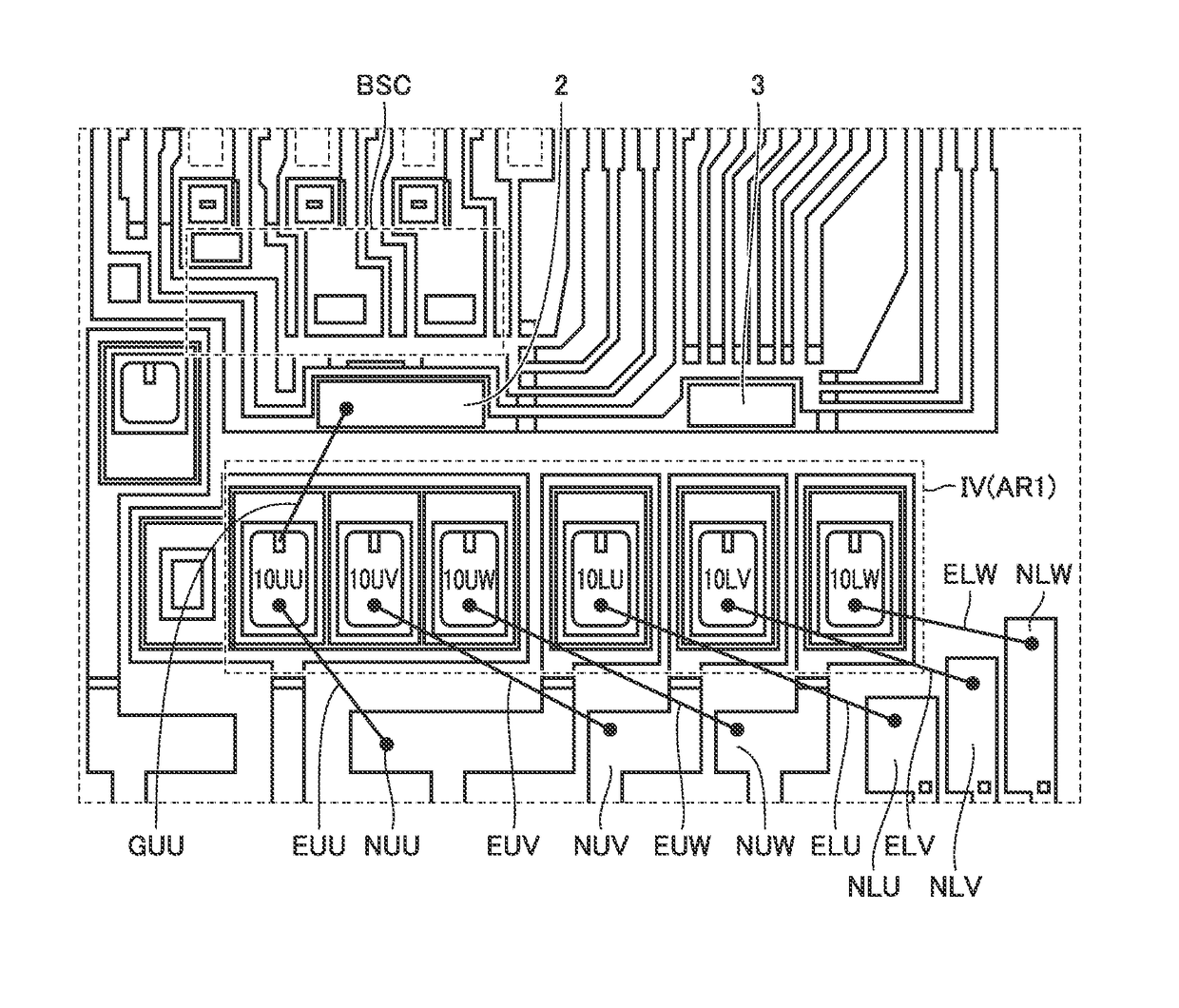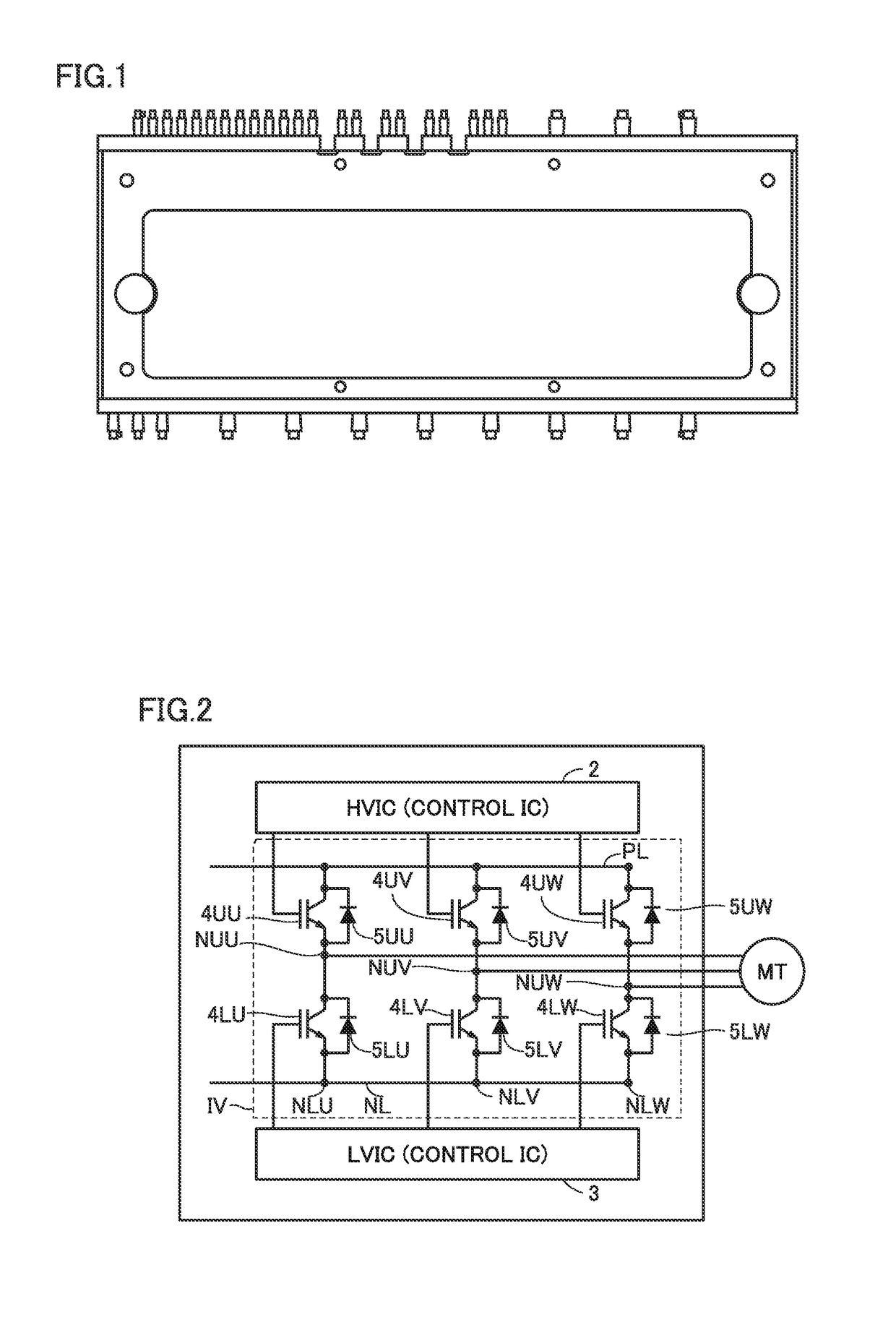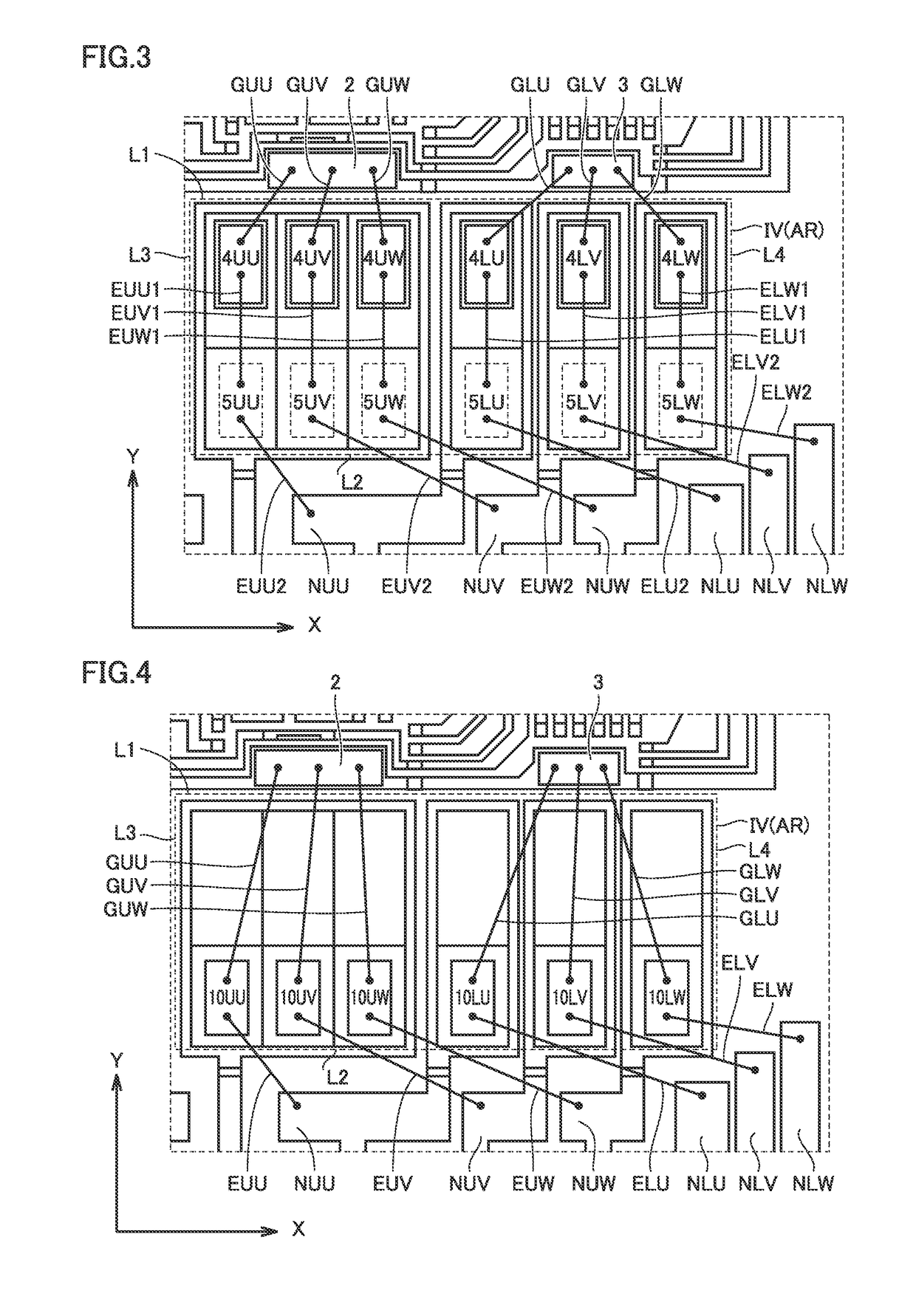Semiconductor Module
a technology of semiconductors and modules, applied in the direction of solid-state devices, ac motor stoppers, basic electric elements, etc., can solve the problems of excessive generation of surge voltage across power chips, increased wiring inductance inside packages, etc., and achieve the effect of preventing excessive generation of surge voltag
- Summary
- Abstract
- Description
- Claims
- Application Information
AI Technical Summary
Benefits of technology
Problems solved by technology
Method used
Image
Examples
first embodiment
[0023]FIG. 1 is a view showing an outer shape of a transfer mold-type IPM of a first embodiment.
[0024]The transfer mold-type IPM at least includes a control IC and a plurality of power chips. Semiconductor elements in the transfer mold-type IPM are sealed with a mold resin by a transfer mold method.
[0025]FIG. 2 is a view showing components included in the transfer mold-type IPM in the first embodiment.
[0026]The transfer mold-type IPM includes a three-phase inverter IV, a high voltage integrated circuit (HVIC) (control IC) 2, and a low voltage integrated circuit (LVIC) (Control IC) 3.
[0027]The transfer mold-type IPM is connected with a three-phase induction motor MT.
[0028]Three-phase induction motor MT is configured to be driven by a three-phase voltage having different phases. Specifically, in three-phase induction motor MT, a rotating magnetic field is generated around a rotor, which is a conductor, using a three-phase alternating current (AC) having three phases called a U phase, ...
second embodiment
[0052]FIG. 5 is a view showing a layout of a transfer mold-type IPM of a second embodiment.
[0053]Also in the second embodiment. RC-IGBTs 10UU, 10UV, 10UW, 10LU, 10LV, 10LW are arranged in die pad area AR, as in the first embodiment.
[0054]The connection relation between RC-IGBTs 10UU, 10UV, 10UW, 10LU, 10LV, 10LW and HVIC 2, LVIC 3, power terminals NUU, NUV, NUW, NLU, NLV, NLW in the second embodiment is the same as that in the first embodiment.
[0055]In the second embodiment, of two RC-IGBTs for an upper arm and a lower arm of each phase, one is arranged at a position closer to second side L2 than to first side L1 in the Y direction, and the other is arranged at a position closer to first side L1 than to second side L2 in the Y direction.
[0056]Further, six RC-IGBTs are arranged in a staggered pattern along the X direction. That is, of two RC-IGBTs adjacent in the X direction, one is arranged at a position closer to second side L2 than to first side L1 in the Y direction, and the othe...
third embodiment
[0062]FIG. 6 is a view showing a layout of a transfer mold-type IPM of a third embodiment.
[0063]Also in the third embodiment, RC-IGBTs 10UU, 10UV, 10UW, 10LU, 10LV, 10LW are arranged in die pad area AR, as in the first embodiment.
[0064]The connection relation between RC-IGBTs 10UU, 10UV, 10UW, 10LU, 10LV, 10LW and HVIC 2, LVIC 3, power terminals NUU, NUV, NUW, NLU, NLV, NLW in the third embodiment is the same as that in the first embodiment.
[0065]In the third embodiment, for each of two of the three phases, of two RC-IGBTs for an upper arm and a lower arm, one is arranged at a position closer to second side L2 than to first side L1 in the Y direction, and the other is arranged at a position closer to first side L1 than to second side L2 in the Y direction. For one of the three phases, both of two RC-IGBTs for an upper arm and a lower arm are each arranged at a substantially central position between first side L1 and second side L2 in the Y direction.
[0066]Die pad area AR is divided ...
PUM
 Login to View More
Login to View More Abstract
Description
Claims
Application Information
 Login to View More
Login to View More - R&D
- Intellectual Property
- Life Sciences
- Materials
- Tech Scout
- Unparalleled Data Quality
- Higher Quality Content
- 60% Fewer Hallucinations
Browse by: Latest US Patents, China's latest patents, Technical Efficacy Thesaurus, Application Domain, Technology Topic, Popular Technical Reports.
© 2025 PatSnap. All rights reserved.Legal|Privacy policy|Modern Slavery Act Transparency Statement|Sitemap|About US| Contact US: help@patsnap.com



